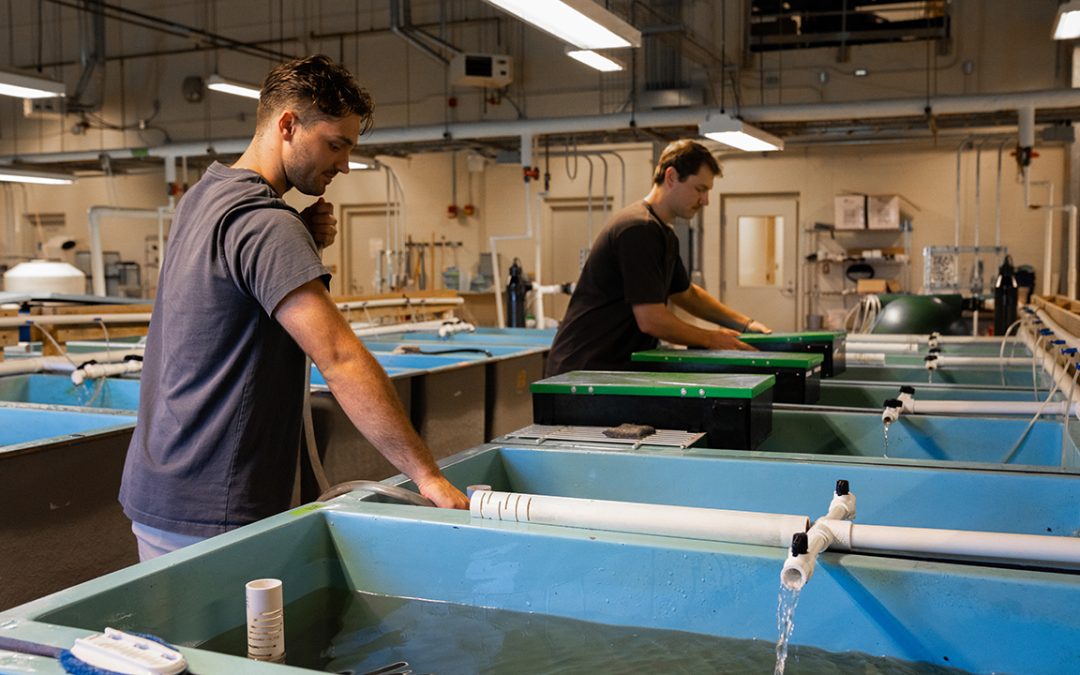by MARY CATHERINE GASTON
 The first time Alan Wilson looked through a microscope at a drop of pond water, he was fascinated by all the things moving around in it. Still, he never imagined that one day he would make a living researching those microscopic organisms as an associate professor in Auburn’s School of Fisheries, Aquaculture and Aquatic Sciences.
The first time Alan Wilson looked through a microscope at a drop of pond water, he was fascinated by all the things moving around in it. Still, he never imagined that one day he would make a living researching those microscopic organisms as an associate professor in Auburn’s School of Fisheries, Aquaculture and Aquatic Sciences.
By studying what is causing an increase in algal blooms in Southeastern water bodies, Wilson and his team could have a huge impact on a resource every living thing needs and many take for granted: drinking water.
Most people are familiar with the organisms Wilson and fellow fisheries associate professor Rusty Wright are investigating. They are blue-green algae, or cyanobacteria, more commonly known as pond scum. During the warm summer months, algae “bloom,” or rapidly increase, and that is cause for concern, Wilson says, because they produce toxins that can be harmful to humans and animals if present in high levels and can cause foul taste and odor in drinking water even in low levels.
Funded by a grant from the U.S. Geological Survey’s National Institutes for Water Resources, Wilson and Wright are in the final year of a project to build scientific models scientists, water quality managers and municipal water systems throughout the Southeast can use to forecast toxic algal blooms.
“We are now working to collect data on blooms throughout the southeast, from Texas to Puerto Rico, to determine the factors that cause toxic algal bloom events so we can predict when they will occur,” Wilson says.
This information will help water resource managers at state agencies and utilities adapt their management practices in order to recognize and prevent water quality and safety concerns before they reach consumers.
While data on harmful blooms has been collected for some time in other states, Wilson’s and Wright’s study is the first of its kind in Alabama, a place where climate and weather contribute to the frequency and severity of the growth.
Another contributing factor is one that Wilson says gardeners and farmers can help control. The algae thrive on the same nutrients that help homeowners grow prize-worthy gardens and lawns: phosphorus and nitrogen. The nutrients are reaching local water supplies, in part, through fertilizer runoff from residences and farms, Wilson says. He points out that while fertilizers are necessary to produce more food to feed a growing human population, research is needed to determine the best practices for using these products.
“We need to educate people to think about these things when they fertilize their yards and gardens,” Wilson says.
To that end, Wilson and Wright will also utilize the knowledge they gain from their research to help the public understand the role they can play in preventing harmful algal blooms. This practical application of his research is the aspect Wilson finds “coolest.”
“It’s nice to have expertise that can really help people,” Wilson says.




